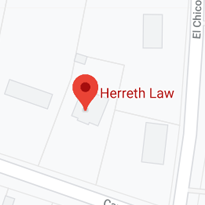 Roughly four out of five DWIs involve breath or blood tests (mostly breath tests). The conviction rate in breath test cases is over 80 percent in most jurisdictions, and in some places, it is closer to 90 percent.
Roughly four out of five DWIs involve breath or blood tests (mostly breath tests). The conviction rate in breath test cases is over 80 percent in most jurisdictions, and in some places, it is closer to 90 percent.
A chemical test is very strong evidence of intoxication. Additionally, under Texas law, defendants are intoxicated as a matter of law if their BAC is above the minimum, which is usually .08.
However, just because a driver fails the breath test, that does not mean the driver is automatically guilty. The presumption of innocence still applies, and an experienced Fort Worth criminal defense attorney knows how to undermine the breath test results, especially in front of a jury.
Understanding How the Breathalyzer Works
In the 1930s, scientists developed the Drunk-o-Meter. The test subject blew into a tube, and ethanol particles in the breath caused the air inside a balloon to change color. The higher the breath alcohol level, the more dramatic the color change.
If you think this technology sounds remarkably similar to Breathalyzer technology, you are right. Modern Breathalyzers have more bells and whistles than their Drunk-o-Meter forefathers, but they are essentially the same.
When test subject blows into a Brethalyzer, a fuel cell converts ethanol to electricity. The higher the ethanol level, the stronger the current. An internal computer measures this electrical reaction and uses it to estimate the subject’s blood alcohol content level.
It’s important to point this process out to jurors, usually in the voir dire. Once they understand that the Breathalyzer is just a souped-up Drunk-o-Meter, they are much more likely to account for some specific flaws, which are listed below.
Some Specific Flaws
Granted, if the defendant blows a 1.5 or above, these flaws may not make much difference. But in a borderline BAC case, they could make all the difference.
-
Mouth Alcohol: If the defendant burps or belches in the fifteen minutes prior to the test, the higher mouth alcohol level skews the Breathalyzer results. Texas law technically requires a monitoring period, but officers need not watch the defendant the whole time. So, there is plenty of room for reasonable doubt.
-
Acetone Levels: This process is a bit complex. The body of a diabetic cannot burn carbohydrates for energy. So, it burns ketones instead. This process creates acetone, which the Breathalyzer registers as ethanol.
-
Unabsorbed Alcohol: Generally, alcohol goes from the stomach to the liver to the blood. Because of this delay, if the person has been drinking in the last hour, that alcohol may be in the body, but not the blood. As a result, the Breathalyzer’s BAC estimate may be artificially high.
Many Fort Worth criminal defense attorneys partner with chemists to drive home these flaws with the jury.
A positive breath test does not automatically mean a guilty verdict in a DWI. For a free consultation with an experienced criminal defense attorney in Fort Worth, contact Herreth Law. We routinely handle matters in Tarrant County and nearby jurisdictions.

